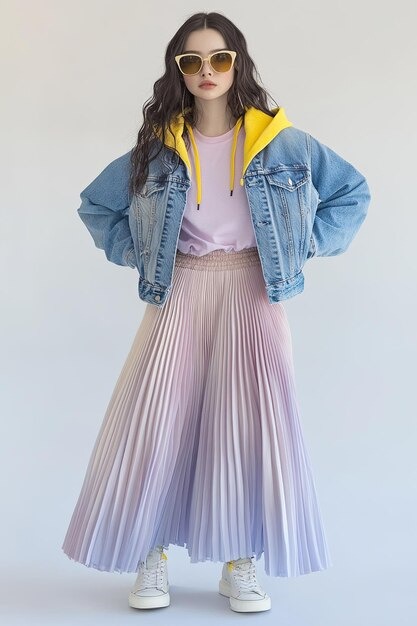How to Make Fashion More Sustainable
The fashion industry is one of the largest contributors to environmental degradation, accounting for significant carbon emissions, water consumption, and waste. However, as awareness grows, so does the opportunity to make fashion more sustainable. By adopting conscious practices, both consumers and brands can play a pivotal role in reducing the industry’s environmental footprint. Here’s how.
1. Embrace Slow Fashion
Fast fashion, characterized by cheap, rapidly produced clothing, has dominated the industry for decades. However, its environmental and social costs are staggering. Slow fashion offers a sustainable alternative by prioritizing quality over quantity. This means investing in timeless, well-made pieces that last longer, rather than chasing fleeting trends.
For example, brands like Patagonia and Eileen Fisher focus on durable materials and ethical production processes. As a consumer, you can contribute by buying fewer items and choosing pieces that align with your personal style for years to come.
2. Choose Sustainable Materials
The materials used in clothing production have a significant environmental impact. Conventional cotton, for instance, requires vast amounts of water and pesticides, while synthetic fibers like polyester contribute to microplastic pollution. Opting for sustainable materials can drastically reduce these effects.
Organic cotton, hemp, linen, and Tencel are excellent alternatives. Additionally, recycled fabrics, such as recycled polyester or upcycled materials, help reduce waste. Brands like Stella McCartney and Reformation are leading the way by incorporating these materials into their collections.
Why Material Choice Matters
Every fabric has a lifecycle, from production to disposal. Sustainable materials often require fewer resources to produce, are biodegradable, or can be recycled. By choosing these options, you’re supporting a circular economy that minimizes waste and maximizes resource efficiency.
3. Support Ethical Brands
Sustainability isn’t just about the environment—it’s also about social responsibility. Many fashion brands rely on exploitative labor practices, from underpaid workers to unsafe working conditions. Supporting ethical brands ensures that your purchases contribute to fair wages and humane treatment of workers.
Look for certifications like Fair Trade, B Corp, or GOTS (Global Organic Textile Standard) to identify brands committed to ethical practices. For instance, People Tree and Thought Clothing are known for their transparent supply chains and fair labor policies.
4. Extend the Life of Your Clothes
One of the simplest ways to make fashion more sustainable is to take better care of the clothes you already own. Proper maintenance can significantly extend the lifespan of your garments, reducing the need for frequent replacements.
Wash clothes only when necessary, use cold water, and air dry them to conserve energy. Repairing small tears or replacing buttons can also breathe new life into worn-out items. If you’re feeling creative, consider upcycling old clothes into something new, like turning a dress into a top or transforming jeans into shorts.
The Power of Secondhand Shopping
Secondhand shopping is another effective way to extend the life of clothing. Thrift stores, consignment shops, and online platforms like Depop and Poshmark offer a treasure trove of pre-loved items. Not only is this an eco-friendly option, but it’s also a great way to find unique pieces at a fraction of the cost.
5. Advocate for Transparency
Transparency is key to driving sustainability in the fashion industry. Brands that openly share information about their supply chains, production processes, and environmental impact are more likely to be held accountable for their practices.
As a consumer, you can demand transparency by asking questions and supporting brands that prioritize it. Initiatives like Fashion Revolution’s #WhoMadeMyClothes campaign encourage brands to disclose their manufacturing processes and empower consumers to make informed choices.
6. Participate in Clothing Swaps
Clothing swaps are a fun and sustainable way to refresh your wardrobe without buying new items. These events allow participants to exchange clothes they no longer wear, giving garments a second life and reducing waste.
Organize a clothing swap with friends or attend community events. Not only does this promote sustainability, but it also fosters a sense of community and creativity.
7. Educate Yourself and Others
Knowledge is a powerful tool for change. Educate yourself about the environmental and social impacts of the fashion industry, and share this information with others. The more people understand the issues, the more likely they are to adopt sustainable practices.
Follow sustainable fashion blogs, watch documentaries like “The True Cost,” and engage in discussions about ethical fashion. By spreading awareness, you can inspire others to make conscious choices.
Conclusion
Making fashion more sustainable is not just a trend—it’s a necessity. By embracing slow fashion, choosing sustainable materials, supporting ethical brands, and extending the life of your clothes, you can contribute to a healthier planet. Advocate for transparency, participate in clothing swaps, and educate yourself and others to amplify your impact. Together, we can transform the fashion industry into a force for good.



